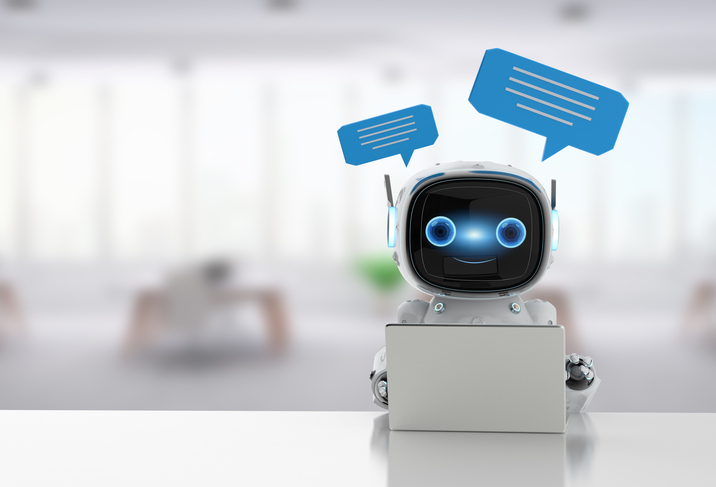The technological world is evolving at a rapid pace, and it can be challenging to keep up, especially if you don't work directly within the technology field. We recommend keeping yourself updated regularly, as the industry is continuously evolving. That being said, let us take you on a journey through this exciting IT world where we'll go through some of the most common words and expressions.
1. Algorithm:
An algorithm is like a recipe for getting things done. In programming, algorithms are the basic elements that help software perform tasks effectively and logically. While algorithms and artificial intelligence (AI) are often discussed together, they're quite distinct. One notable difference is that algorithms follow a set, often straightforward path, whereas AI learns and evolves through experience.
AI technologies commonly employ several algorithms to tackle complex tasks. Algorithms also play a significant role in marketing and social media. For instance, they power search engines and social media platforms, determining which results or posts you see first, with the aim of showing the most relevant content.
2. Coding and programming:
Coding is a crucial aspect of the programming process, involving the specific instructions developers provide to execute actions on a technical device. While coding and programming are sometimes used interchangeably, it's essential to recognize their distinctions. Coding represents just one facet of programming, which encompasses broader activities such as planning, troubleshooting, debugging, and collaboration.
Programming involves setting up a series of instructions that control the machine. It includes analyzing the task the program should perform (requirements specification), breaking down the task into smaller tasks, developing logic to solve the tasks, writing instructions in a programming language, debugging, and documenting.
3. Programming language:
A programming language serves as a means for humans to interact with computers. Strict adherence to the language's grammar, known as "syntax," is essential to avoid errors in machine interpretation. Programming languages are categorized into high-level and low-level languages.
Low-level languages are closely aligned with the computer's machine language, whereas high-level languages are more abstract and relate to functions and variables. Low-level languages are often incomprehensible to humans. Examples of low-level languages include machine code and assembly language. Conversely, coding in high-level languages is more human-readable. Examples of high-level languages encompass Java, Python, and C++.
4. Architecture:
IT architecture encompasses the holistic design and organization of information technology systems and resources within a company. It entails strategizing and arranging the interaction among different IT elements like software, hardware, networks, and databases to align with business objectives. IT architecture considers technical specifications, business goals, security measures, scalability, and cost-efficiency. IT architects are responsible for crafting, executing, and upholding this architecture to guarantee the smooth operation of IT systems.
5. Server:
A server, network server, or host all refer to the same thing. A server is a large and powerful computer. Its task is to serve the users connected to the server with one or more services over a network.
6. Network:
A network is a system for communication between computers.
/working%20on%20laptop%20pointing%20-1500x.jpg?width=1500&height=1000&name=working%20on%20laptop%20pointing%20-1500x.jpg)
7. BI:
BI stands for Business Intelligence and is a term that refers to the use of data in decision-making processes. It is a decision support system that extracts relevant data from large datasets. Good business intelligence is when all users of the data are presented with the information they desire in the format that suits their role or their preferred way of receiving information.
8. Cloud services:
Cloud services, or cloud computing, is a collective term for everything from data processing and storage to software on servers that are accessible from external server parks connected to the internet. These server parks are characterized by their ability to scale dynamically. This means that computing power can be adjusted to capacity needs, and the customer only pays for what they actually use. Cloud services are commonly divided into service models. The most common ones are:
• Software as a Service (SaaS)
• Platform as a Service (PaaS)
• Infrastructure as a Service (IaaS)
Cloud services can also be divided into delivery models such as:
• Public cloud, where cloud services are available to everyone
• Private cloud, accessible only to the organizations for which the cloud service is intended
• Hybrid cloud, a combination of the two above
9. Azure
Azure is one of the world's leading cloud services owned by Microsoft. This is a public cloud.
10. On prem:
On-premises, often abbreviated as "on-prem", means that the software is installed and run locally in the company's own IT environment. This is the opposite of using a cloud service, where external server farms are used.
11. Database:
A database is a collection of information stored as data on a data system, such as inventory in a store. Databases are used to store and organize data. We distinguish between relational and non-relational databases. Relational databases understand SQL. Non-relational databases are called NoSQL since they often don't use SQL.
12. SQL:
Simply put, SQL is a language used to communicate with the database, a kind of code language. SQL has different dialects. A rule of thumb is that SQL is a robot language with various robot dialects. A more precise definition is that SQL stands for Structured Query Language.
13. Data warehouse:
A data warehouse serves as a digital repository, collecting data from diverse sources. It acts as the foundation for business intelligence (BI) or analysis programs. Essentially, envision a data warehouse as a storage facility or archive where all your data is aggregated and structured for simplified usage and analysis. It empowers you to derive valuable insights, identify trends and patterns, and make informed decisions leveraging your data.
14. Data center:
A data center serves as a specialized space housing computers for data processing, distribution, and storage. Primarily comprised of IT infrastructure like servers, routers, switches, and storage systems, data centers are organized with server racks. Additionally, they incorporate cooling and ventilation systems, backup power supplies, security measures, fire prevention systems, and monitoring facilities. Given their significant heat output, there's a growing trend towards sustainability, with surplus heat repurposed for initiatives like district heating systems (green technology).
15. Redundancy:
Redundancy is a duplication of critical parts or functions in a system. If one function stops working, you have another equivalent one as a backup. For example, redundancy is essential in a data center so that there is always a backup system in case something happens.
16. Encryption:
Encryption means that something cannot be read by unauthorized individuals. Encryption is a mathematical method that ensures confidentiality and is crucial for data security.
17. UI and UX:
UI stands for User Interface. UX stands for User Experience. UI is a small part of UX. UX is the entire user experience from start to finish, while UI is a step in this experience. UI is what the user uses to perform actions. For example, if you use the app or website of a store to shop online. It's essential that the app looks good, is user-friendly, and that payment works. If what you ordered isn't delivered on time or if you receive the wrong item, it will negatively impact the overall user experience (UX). In other words, UX is how the user experiences the purchasing experience overall, from discovering that the online store exists to paying for and receiving the item.
18. Front-end, Back-end and Full-stack:
Front-end refers to the user-facing part of software, shaping what users visually interact with on screen and the responses to their actions. UX, or User Experience, is closely linked to front-end design. Typically, front-end design is undertaken by interaction or graphic designers and implemented by developers. On the other hand, back-end refers to the part of the software closest to the database, where data is stored. It encompasses the processes "behind the scenes" that enable systems to function together. Communication between back-end and front-end occurs via an API, as they often utilize different codebases and programming languages. A full-stack developer is versatile, adept at both front-end and back-end development.
19. API (Application Programming Interface):
API is a kind of "middleman" that allows one application to request specific data or perform specific actions from another application without having to know the details of how the other application is implemented. In short, an API is a way for different software systems to communicate with each other. For example, travel agencies can receive information about the weather at the desired destination through an API to a weather service.
20. Malware:
Malware is malicious or harmful software intended to cause harm, such as stealing sensitive information or sending out spam. You can get malware if, for example, you download an unknown program or click on a link in an email with bad intentions.
21. Cookies:
A cookie is a small text file that is downloaded and stored on the user's computer by clicking on a website. When you visit different websites, a window usually appears asking you to accept cookies. When you accept cookies, you agree that the website can store login details, track where you navigate on the website, or remember your shopping cart in online stores.
22. Java:
Java is a programming language developed by Sun Microsystems. Java is the most popular programming language for software developers. Java is object-oriented, meaning it organizes the code around classes and objects, rather than functions and commands. Most programming languages are object-oriented (e.g., C++, C#, Python, and Ruby). A significant advantage of Java is that it can easily be transferred from one platform to another, e.g., from Windows to a mobile phone, without being completely rewritten. As long as you have a "Java interpreter" installed on your operating system, also called the Java Virtual Machine (JVM), Java can run. Java is used in everything from mobile apps (e.g., Spotify) and web apps (e.g., LinkedIn and Twitter) to enterprise software, games (e.g., Minecraft), and IoT applications (e.g., smart TV). Java can be easily transferred to various platforms within IoT.
23. Python:
Python is one of the world's most popular programming languages. It is logically structured, easy to read, and easier to learn than many other programming languages. Python is an object-oriented high-level programming language. Programs created in Python can run on all popular operating systems. With Python, you can control machines, robots, electronics, create websites, and perform advanced machine learning.
24. Machine learning:
Machine learning is a specialization within artificial intelligence. In machine learning, statistical methods are used to allow computers to find patterns in large amounts of data. Instead of being programmed, we say that the machine "learns." Machine learning is used, for example, in language recognition, self-driving cars, email filtering, and image recognition.
/coding%202%20screens%20-1500x.jpg?width=1500&height=1000&name=coding%202%20screens%20-1500x.jpg)
25. AI:
Artificial intelligence (AI) is systems that perform actions, either physically or digitally, based on the interpretation and processing of structured or unstructured data, with the aim of achieving a specific goal.
26. AGI:
AGI stands for Artificial General Intelligence. AGI is one of the most challenging areas of AI research because the goal is to develop an AI that resembles humans and can learn to adapt to new situations and challenges. AGI differs from other types of AI as it focuses on solving specific tasks or domains. Efforts are being made to develop AGI, but a complete solution has yet to be achieved.
27. ChatGPT:
ChatGPT stands for "Generative Pre-Trained Transformer" and is developed by OpenAI. It is an advanced text generation model, essentially a chatbot that users can converse with. ChatGPT is experiencing rapid growth in terms of user adoption. However, it's crucial to understand that while ChatGPT can be very convincing, it may not always provide accurate information since its responses are based on the data it has been trained on.
28. Quantum computer:
Often dubbed the supercomputer of the future, quantum computers represent a significant leap in computational power compared to conventional computers. At the heart of this leap are qubits, or quantum bits. While traditional computers rely on binary bits (1s and 0s), quantum computing introduces qubits, offering exponentially more computing power and unlocking a multitude of possibilities beyond the capabilities of current machines.
29. IoT (Internet of Things):
IoT, or the Internet of Things, means that the things around us can be connected to the internet and communicate over the network. This allows us to remotely control devices and collect data, which was not possible before. For example, you can control the stove from the couch, turn on the heat in the cabin before leaving home, or create a training program on an app that you can send to your smartwatch.
30. Industrial IoT (IIoT):
This is IoT placed in an industrial context. It denotes the network that connects industrial devices. IIoT is systems that can monitor operations and collect, exchange, and analyze industrial data. With new insights, the company is equipped to make better data-driven decisions. For example, machines in a plant can be connected to IoT.
31. Big data:
Big data encompasses massive volumes of digital information subjected to in-depth analysis. While wielded effectively, it holds immense potential for societal advancement; however, it also presents privacy concerns. For instance, during the COVID-19 pandemic, big data aided in understanding transmission routes and geographical hotspots of infection, showcasing its utility amidst global crises.
32. VPN (Virtual Private Network):
In simple terms, a VPN adds an extra layer of security when you're browsing and engaging online. By routing your internet traffic through an external network, it prevents others from seeing your identity, activities, and transmitted data. There are various VPN types and connection methods available to suit different needs.
33. Agile:
Agile denotes flexibility, a characteristic often embraced in project management within numerous technology firms. An agile approach involves breaking projects into smaller stages and tasks. These tasks are typically organized into short development phases, known as sprints. Working in sprints allows for ongoing feedback from stakeholders, facilitating adjustments throughout the process instead of waiting until completion. Agile methods are esteemed for their adaptability, collaborative teamwork, and responsiveness to user requirements.
34. CMS:
CMS, or Content Management System, serves as a website publishing solution, positioned at the foundation of websites crafted by developers. Its purpose is to enable website owners to input content effortlessly, without the need for coding knowledge. Prominent CMS systems include Sanity and Craft.
We hope you've gained some new insights from this guide and found it valuable. This compilation represents only a fraction of the extensive lexicon in the realm of technology. The landscape of IT is continuously evolving. Who knows what tomorrow will bring?
Do you have any questions? Contact us, and we'll have a chat!
Contact us



